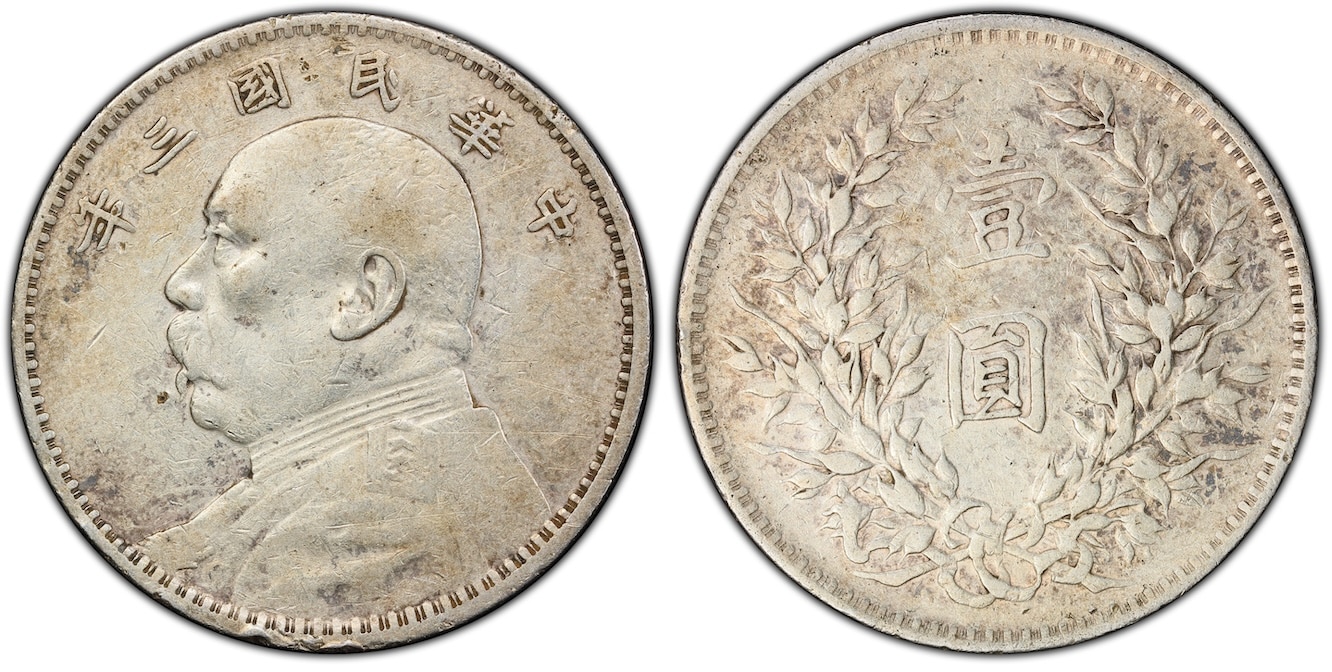Oakton Coins is buying all collectible coins / paper money (U.S. and world), all forms of gold & silver.
Coins and banknotes often serve as tangible pieces of history, reflecting the culture, politics, and economic circumstances of the times they were minted. One such numismatic treasure is the 1914 China Republic $1 Silver “Fat Man” Dollar. This coin is not only a striking work of art but also a symbol of China’s turbulent transition from imperial rule to republicanism in the early 20th century. In this article, we will explore the historical significance of this coin, shedding light on its nickname and the events surrounding its production.
The “Fat Man” dollar gets its colloquial name from the portly figure depicted on the obverse side. This iconic design is none other than Dr. Sun Yat-sen, the founding father of the Republic of China. Dr. Sun Yat-sen was a pivotal figure in Chinese history, leading the overthrow of the Qing Dynasty and advocating for modernization, democracy, and nationalism.
The 1914 dollar was issued during Sun Yat-sen’s presidency and represents his vision for a unified, modern China. The coin showcases his distinctive features, including his round face and bowler hat, which led to its “Fat Man” moniker. This design was created by the renowned Italian engraver L. Giorgi, and it stands as a testament to the influence of Western art on Chinese numismatics during this period.
To fully grasp the historical significance of the 1914 “Fat Man” dollar, one must consider the political landscape of China during the early 20th century. In 1912, the Qing Dynasty, which had ruled China for over two centuries, was overthrown, and the Republic of China was established. Dr. Sun Yat-sen became the first provisional president of the republic, marking a new era for the nation.
Amidst the political upheaval and regional warlords vying for power, the Chinese economy was in disarray. To stabilize the currency and assert control over the monetary system, the new government introduced a standardized silver coinage system, and the “Fat Man” dollar was a crucial part of this reform. This coin, with its 90% silver content, became a symbol of the fledgling republic’s commitment to modernization and economic stability.
The 1914 China Republic $1 Silver “Fat Man” Dollar had a significant impact both domestically and internationally. It played a crucial role in unifying the monetary system, which was essential for restoring economic stability in a fragmented nation. Additionally, the coin‘s iconic design garnered international attention, showcasing China’s aspiration for modernization and its integration into the global community.
Today, the “Fat Man” dollar remains a highly sought-after collectible, not only for its historical significance but also for its artistic beauty. Numismatists worldwide appreciate the coin’s intricate design and the fascinating history it represents.
